
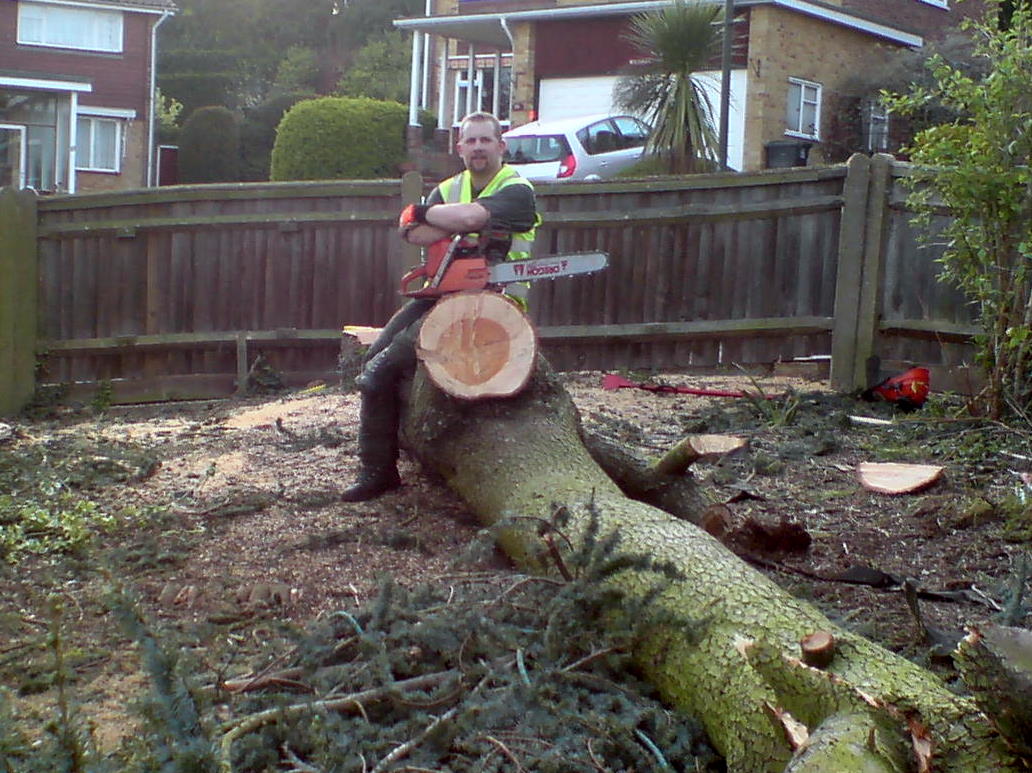 Why employ a professional?
Why employ a professional?
When considering tree removal, you have to ask yourself a few questions:-
i) Can I do this work safely? Tree removal can be a dangerous business;
in fact tree surgery is technically the most dangerous job in the UK outside of the
entertainment industry (circus performers, etc). Once the tree becomes over a certain
size (and therefore weight),
the results of errors become serious. Throw in the requirement to frequently work at heights,
and chainsaw use and you have a recipe for disaster if you're lacking in training and experience.
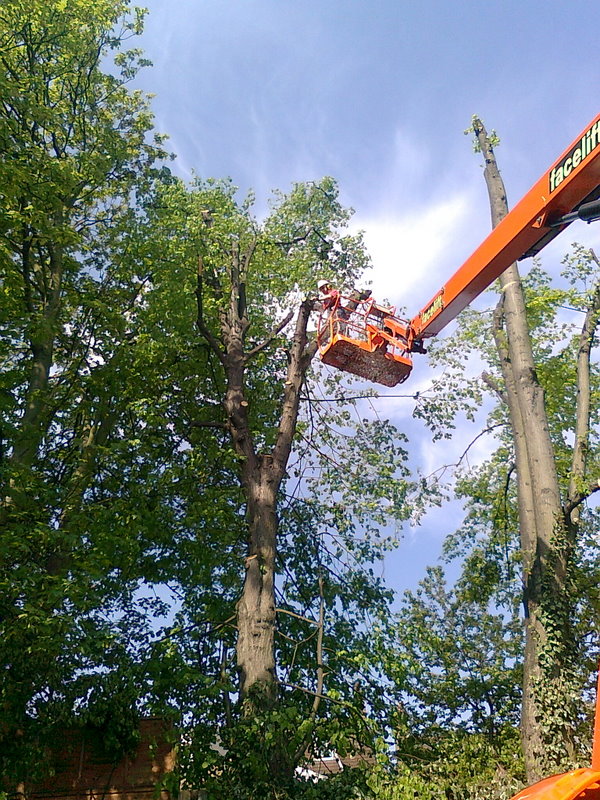
ii) Do I have access to the correct tools and equipment?
Arboriculture equipment is specialised and expensive, both to buy and hire. (At right is
a twelve ton cherry-picker required for a recent job). Chainsaws are dangerous machines, and professionals must
pass much testing to hold the relevant qualifications: There is debate as to
whether they should even be available to the public to hire or purchase at all.
For any tree over small size cutting with hand tools is too laborious for most, and
furthermore the resulting slow rate of progress is dangerous in itself: Fatigue is a common
cause of accidents.
iii) Do I have the knowledge to do this work? Even apparently small trees or branches can be deceptively heavy, and many a seemingly small error has resulted in a crushed greenhouse, smashed fencing or damage to a prized plant that was sited nearby. If this kind of thing happens, and it can happen - even to professionals - you'll start to wonder about the small print in your insurance!
With tree pruning, access can be a problem as the parts of the tree that need attention are usually the extremities. Specialist equipment can help tremendously with this.
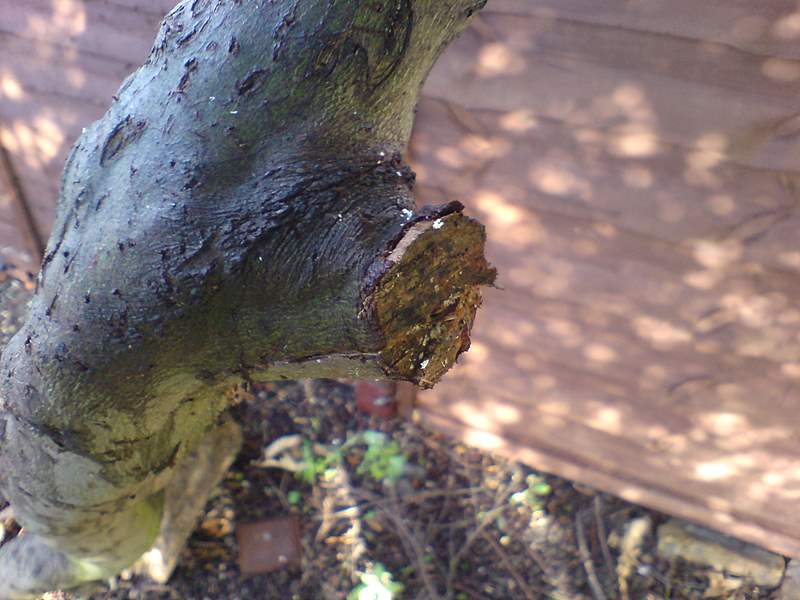
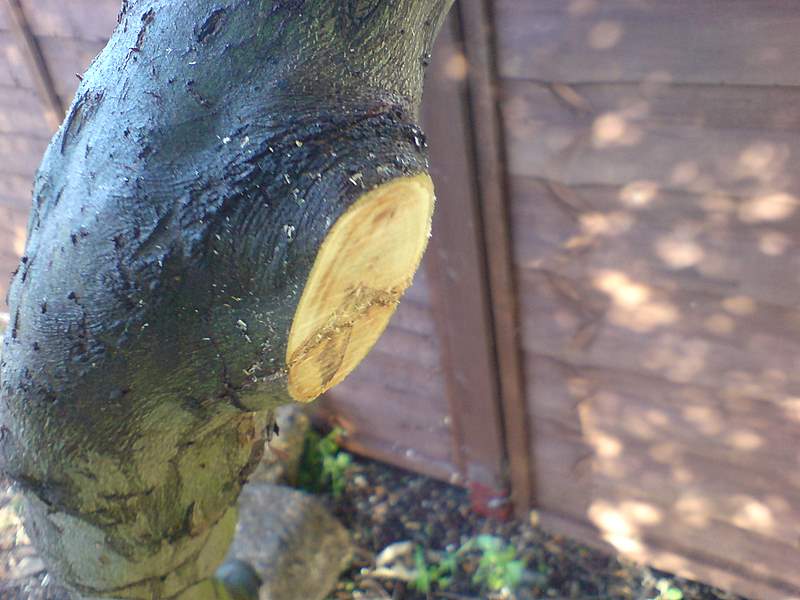
Being so huge and often so long-lived trees have a sort of
aura of invincibility about them, but poorly treated trees can be injured and become
ill just as any living thing can. Because their decline can be relatively
slow - perhaps taking several years – it can be difficult to pinpoint why a tree
has succumbed.
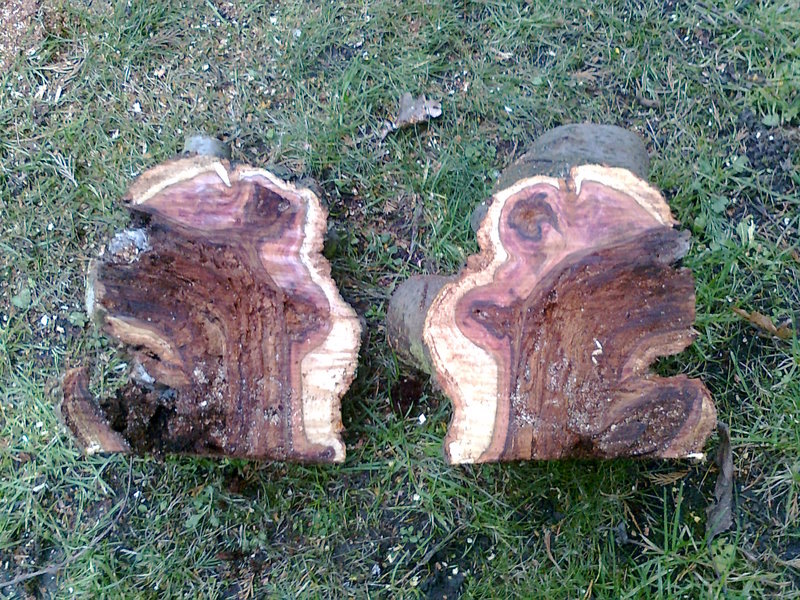
Poorly made cuts and disease entering through the resulting wounds is frequently
the cause. (Photo at right shows a transverse cut opened like a book to show
rot entering through past bad pruning cuts as the cause of decline). Each year
poor tree work is responsible for the defacement and loss of many grand old trees.
There's not necessarily any malice in the actions of those responsible, but if you
lose a beautiful mature specimen for whatever reason then sadly it can't simply be replaced.
For these reasons You might want to consider employing a qualified professional.